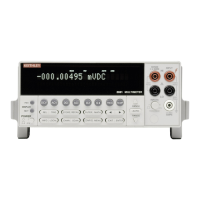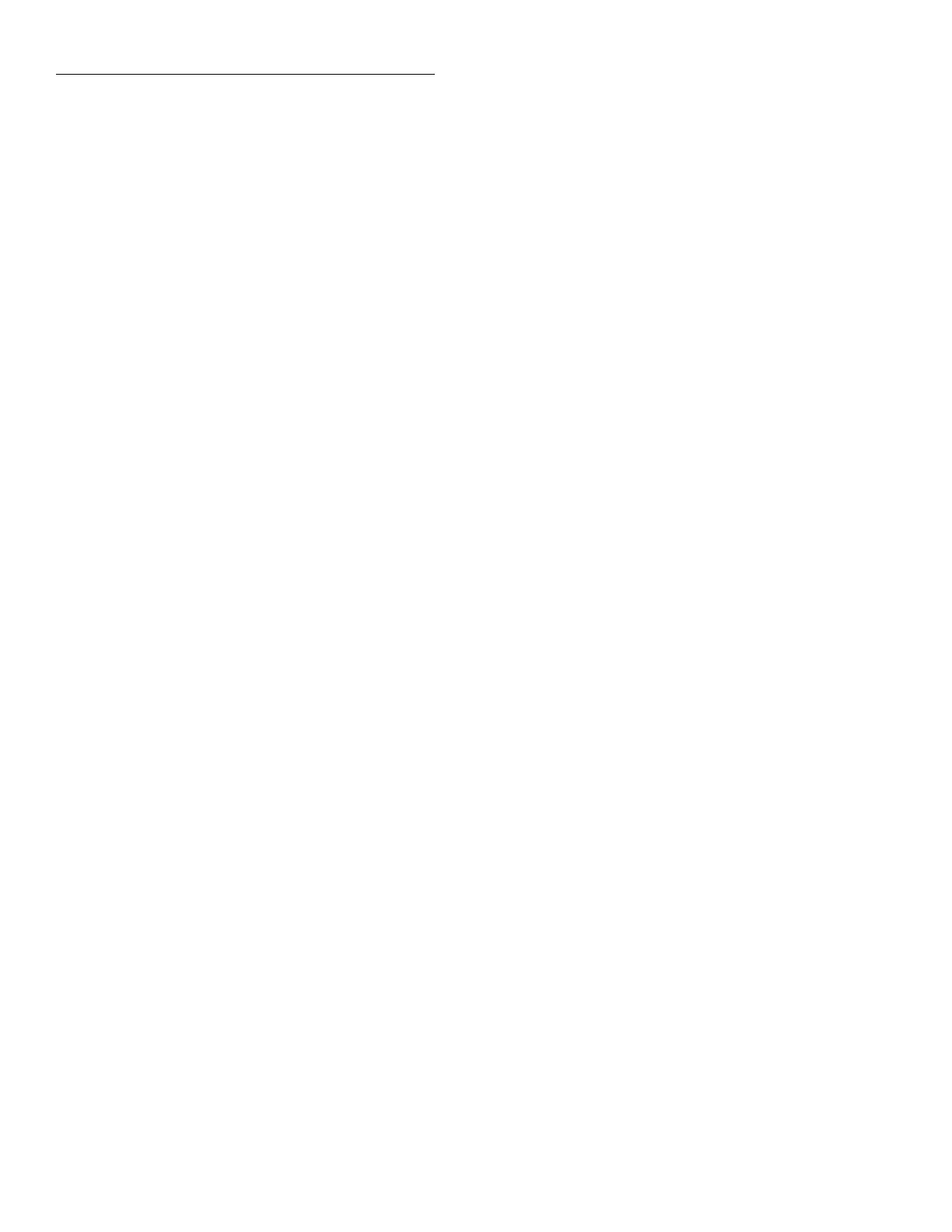IEEE-488 Reference
4-76
on line #4. The strobe is used to “inform” your external binning circuit that the output port (lines
1, 2 and 3) is ready to be read.
The polarity of the strobe pulse is determined by the programmed polarity of output line #4 (see
Output subsystem). If line #4 is programmed for active-high polarity, the binning strobe will be
a positive-going pulse. Conversely, if programmed for active-low polarity, the strobe will be a
negative-going pulse.
Programming example 10 OUTPUT 716; “:calc3:bstr on; bstr?”
20 ENTER 716; A$
30 PRINT A$
40 END
Line 10 Two commands in this program message; the first enables the binner strobe, and the
second queries the state of the strobe.
Line 20 Addresses the Model 2001 to talk.
Line 30 Displays the state of the binner strobe (1; on).
:IMMediate
:CALCulate3:IMMediate Perform CALC 3
Format :calc3:imm
Description When you change the configuration of the limit test, the next reading will be evaluated according
to that new test configuration. If the instrument is not in a continuous measurement mode (e.g.,
waiting for a manual trigger), the test will not be performed until the next reading conversion
occurs.
This action command allows you to re-process the current input data to test new limits. For ex-
ample, assume the instrument is in a non-continuous measurement mode and requires a manual
trigger to cause the next reading conversion. Changing the test limits will not affect the last test
result. However, sending the :IMMediate command will re-process the data and evaluate the
reading according to the new test limits. Note that sending the :IMMediate command does not
initiate a reading conversion.
Programming example This example assumes that the instrument is configured to perform a limit test.
OUTPUT 716 “:trig:sour bus”
OUTPUT 716 “:calc3:imm”
The first message places the instrument in a “one-shot” measurement mode. While waiting for
a bus trigger, the test limit configuration can be changed. The second message re-performs the
limit test on the same reading.

